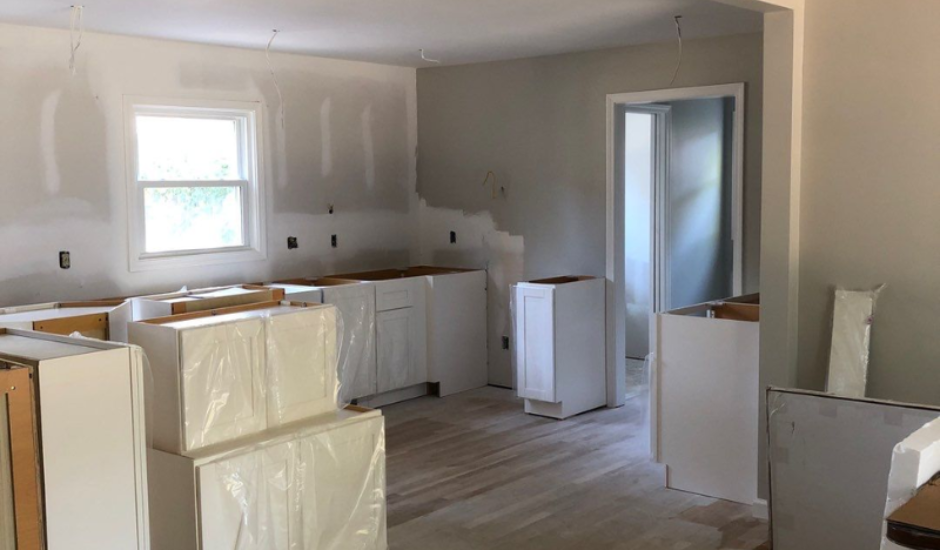Renovating or adding an addition to your home can be an exciting yet unsettling experience as you embark on your professional home remodel journey. Among the many questions that arise, one of the most common concerns homeowners have is, “Can you live in your home during a professional remodel?”
The answer depends on several factors, including the size and scope of the addition, the layout of your home, and your personal preferences. In this blog post, we’ll explore the feasibility of living in your home during a remodeling room addition and provide some tips for making the experience as smooth and comfortable as possible.
Determine the Possibility
Consider the Size and Scope of the Addition
The first step in determining whether you can live in your home during a remodeling project is to assess the size and scope of the work being done. If the addition involves significant structural changes or extensive renovations that would render parts of your home uninhabitable, it may not be feasible to stay on-site during construction. However, if the addition is relatively small or can be completed in stages, it may be possible to continue living in your home with minimal disruption.
Expanding upon this, it’s essential to consult with your contractor to get a clear understanding of the project’s scope. They can provide valuable insights into how the construction process will unfold and whether living on-site is a viable option. Additionally, consider factors such as the availability of alternative accommodations and your tolerance for disruption when making this decision.
Evaluate Your Living Arrangements
Another factor to consider is your living arrangements during the construction process. If you have alternative accommodations available, such as staying with family or renting a temporary residence, you may find it more comfortable to relocate temporarily while the addition is being built. However, if moving out is not an option, you’ll need to make arrangements to ensure that you can still access essential amenities and maintain a reasonable level of comfort during construction.
When evaluating your living arrangements, consider factors such as the size of your family, the availability of nearby accommodation options, and your budget for temporary housing. If staying on-site is the preferred option, discuss with your contractor how they plan to accommodate your needs and address any concerns you may have about living in a construction zone.
Making Preparations
Communicate with the Remodeling Company
Open communication with your remodeling team is key to ensuring a successful living arrangement during the addition project. Discuss your intentions to continue living in your home and address any concerns or limitations that may arise. Your contractor can work with you to develop a construction schedule that minimizes disruptions and ensures that essential services remain functional throughout the process.
In addition to discussing the construction schedule, be sure to communicate any specific needs or preferences you have regarding the living arrangements. This could include requests for temporary amenities, such as a makeshift kitchen or bathroom facilities, or accommodations for pets or children. By keeping the lines of communication open, you can work together with your contractor to create a plan that meets your needs while minimizing the impact of construction on your daily life.
Create a Designated Living Area
During construction, certain areas of your home may be off-limits or temporarily inaccessible. To mitigate this inconvenience, designate a specific area of your home as a living space that will remain unaffected by the construction. This might involve setting up temporary partitions or barriers to separate the construction zone from the living area and ensuring that essential amenities such as bathrooms and kitchens remain functional.
When creating your designated living area, consider factors such as proximity to construction activities, access to natural light and ventilation, and the availability of essential utilities. If possible, choose a space that is relatively isolated from the construction zone to minimize noise and disruption. Additionally, take steps to protect your belongings from dust and debris by covering them with plastic sheeting or moving them to a safe location.
Managing Disruptions
Establish and Follow Ground Rules
Living in a construction zone can be challenging, but establishing clear ground rules can help minimize disruptions and maintain a sense of normalcy and help avoid disruptions to the project. Communicate expectations with your contractor and construction crew regarding noise levels, work hours, and access to certain areas of your home. Additionally, establish guidelines for keeping shared spaces clean and organized to prevent dust and debris from spreading throughout your living area.
When establishing ground rules, consider factors such as the needs and schedules of your family members, as well as any specific concerns or preferences you have regarding the construction process. For example, you may want to designate certain times of day as quiet hours or request that construction activities be limited to certain areas of your property. By setting clear expectations from the outset, you can minimize conflicts and ensure a more harmonious living arrangement during the addition project.
Plan for Temporary Disruptions
Despite your best efforts to minimize disruptions, it’s essential to anticipate temporary inconveniences that may arise during the construction process. This could include disruptions to utilities, increased noise levels, and limited access to certain areas of your home. By planning ahead and having contingencies in place, such as alternative cooking facilities or temporary storage solutions, you can better cope with these challenges and maintain a sense of normalcy throughout the project.
Consider creating a backup plan for essential services such as electricity, water, and heating to ensure that you can continue to meet your basic needs during construction. This might involve investing in portable generators or water storage tanks or making arrangements to stay with friends or family in case of prolonged disruptions. Additionally, communicate with your contractor about any potential issues that may arise and work together to address them proactively.
“What started out for us as a “let’s replace the carpet” project turned into a “let’s go ahead and update our 30-year-old house” project! We heard about City Wide Remodelers on the Toby Tobin show on KMBZ, and decided to go with them for this remodel. From start to finish of our 3-month transformation, they were professional, communicative, accommodating, and just all around nice people to work with!”
– Roger & Melissa, Customers of City Wide Remodelers
Final Thoughts
Living in your home during a room addition remodeling project is certainly possible with careful planning and preparation. By assessing the feasibility of staying on-site, making necessary preparations, and managing disruptions effectively, you can minimize the inconvenience and discomfort associated with construction work. Remember to maintain open communication with your contractor, establish clear ground rules, and plan for temporary disruptions to ensure a smooth and successful addition project while still enjoying the comfort of your own home.
For more information, to discuss your remodeling project, or to schedule a free consultation, please visit our contact page. You can also reach out to us at 816.942.1993 or via email at admin[at]citywideremodelers.com. We look forward to helping you bring your basement vision to life.





